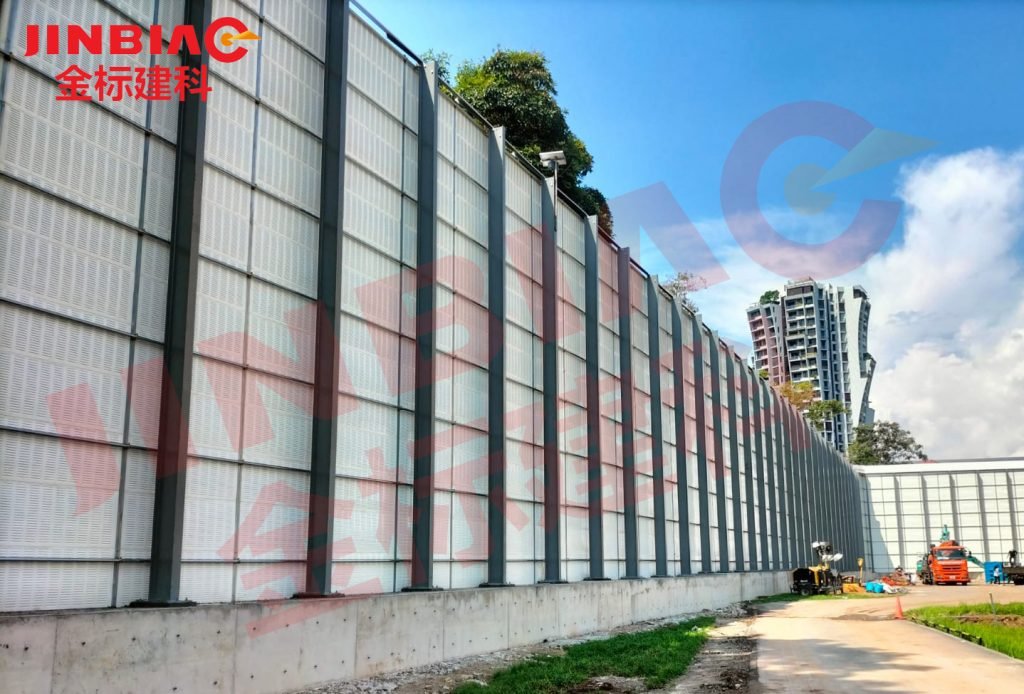
Industrial facilities are known to produce high levels of noise pollution that can be detrimental to the health of workers and surrounding communities. Exposure to high levels of noise can cause hearing loss, tinnitus, and even heart disease, among other health issues. In addition to the negative impact on human health, noise pollution can also disturb wildlife, disrupt communication, and reduce property values. As a result, it is essential for industrial facilities to take measures to reduce noise pollution and protect the health and well-being of workers and surrounding areas. One of the most effective ways to accomplish this is through the use of sound barriers.
Sound barriers are physical structures designed to reduce the transmission of sound waves from one area to another. They can be constructed from a variety of materials such as concrete, steel, or fiberglass, and can be installed in a variety of configurations depending on the specific needs of the facility.
Importance of protecting worker hearing
The importance of protecting worker hearing cannot be overstated in industrial facilities. Excessive noise levels can lead to hearing loss and other health issues, affecting workers’ quality of life and the productivity of the facility. Regulatory bodies have strict guidelines and standards for permissible noise exposure levels in the workplace, and failure to comply with these regulations can result in fines and legal action.
Construction of sound barriers in industrial facilities is a critical step in protecting workers and surrounding areas from noise pollution. These barriers can significantly reduce the noise levels within the facility and create a safer and more comfortable work environment.
Regulations and compliance requirements
Compliance with regulations is a fundamental aspect of installing and maintaining sound barriers for industrial facilities. These regulations and compliance requirements are in place to ensure the safety and well-being of workers and surrounding communities by mitigating noise pollution levels to acceptable levels.
Industrial facilities must adhere to noise pollution control regulations and requirements from local, state, and federal governments. Failure to comply with these regulations can result in serious consequences, including fines, legal action, and reputational damage. Therefore, it is essential to work with sound barrier experts who understand the regulatory requirements and can help ensure compliance throughout the installation and maintenance process.
Sound barrier design considerations
When designing sound barriers for industrial facilities, there are several key considerations that must be taken into account in order to effectively mitigate noise pollution.
The first consideration is the material and construction of the barrier itself. The barrier must be made of materials that are capable of attenuating sound waves, such as concrete or heavy-duty vinyl. The thickness of the barrier is also important, as thicker barriers will offer greater sound reduction.
The second consideration is the placement of the barrier. The barrier should be placed as close as possible to the source of the noise in order to effectively block the sound waves. In some cases, multiple barriers may be necessary to completely block the noise, particularly in areas with high levels of ambient noise.
The third consideration is the overall design of the barrier. The barrier should be designed to reflect sound waves away from surrounding areas, rather than simply absorbing the sound. This can be achieved through the use of angled surfaces, which will deflect sound waves away from the surrounding area.
Effective noise reduction strategies
The use of sound barriers is a common noise reduction strategy that can be highly effective. Barrier materials such as concrete, brick, and metal can be used to create walls or partitions that block noise from reaching surrounding areas.
Other effective strategies include the implementation of engineering controls, such as noise-reducing equipment, maintenance of equipment, and enclosure of noisy machinery. It is important to note that a combination of strategies may be necessary to achieve maximum noise reduction, and regular monitoring of noise levels should always be conducted to ensure continued safety and compliance with regulations.
In conclusion, sound barriers are an effective solution for reducing noise pollution in industrial facilities and protecting workers and surrounding areas. By implementing these barriers, companies can ensure compliance with noise regulations, improve the working environment for employees, and enhance their reputation within the community.
It is important for facility managers to work with experienced professionals to design and install construction sound barriers that meet their specific needs and requirements. Investing in sound barriers now can prevent costly legal and environmental consequences in the future, and ultimately contribute to a more sustainable and responsible business model.
